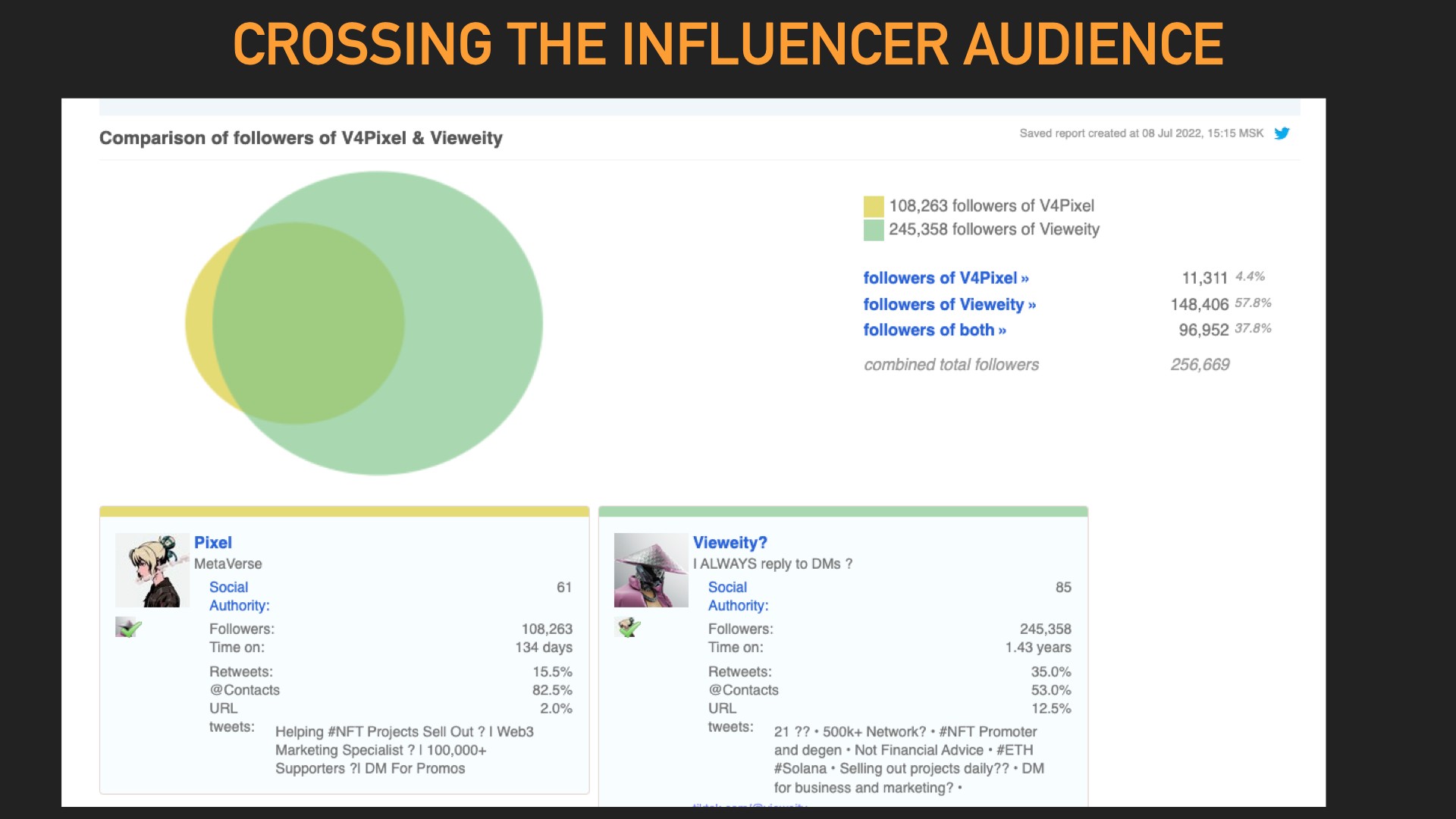How to Spot Scams, Fake Promotions, and Bots on Crypto Twitter

Crypto Twitter (CT) has become the go-to information hub for the global crypto community. It’s where trends emerge, investment waves form, and the loudest conversations take place. But as the platform's audience grows, it’s also becoming a battleground for manipulation, scams, and wasted marketing budgets.
If you’re a Web3 founder or preparing to launch an NFT collection, it’s critical to understand how the grey market of influencers works, how to tell real engagement from fake, and which promotional strategies actually deliver results.
Scams on Crypto Twitter: What to Watch Out For
Crypto Twitter is a space of both opportunity and risk. Every day, thousands of users fall victim to increasingly sophisticated scam tactics. Below are the most common schemes you need to avoid.
Fake Influencers and Copycat Accounts
Scammers frequently impersonate public figures like Elon Musk, CZ, and Vitalik Buterin. These accounts copy profile photos, usernames, and banners to promote fake “airdrops” or fake donation campaigns. You’ll often find them replying to posts by real influencers with suspicious offers, like “send 100 USDT and get 10,000 back.”
Tip: Never approve transactions on unknown websites. Use Revoke.cash to revoke smart contract permissions. Always check if the profile is verified and only follow links from official project sources.
Seed Phrase and Private Key Scams
Scammers post emotional stories like “I’m a student,” or “I received USDT by mistake,” and share a seed phrase to trick you into importing a wallet. Once you send ETH to cover "fees," a script immediately drains the funds.
Remember: No legitimate user will ever share their seed phrase. If you see one, it’s always a trap.
Fake Partnership and Ad Offers
Founders often receive DMs offering “game reviews,” “paid tweets,” or “partnerships.” Opening attachments in these messages may install malware or keyloggers.
Tip: Avoid downloading ZIP files or apps from unknown sources. Keep all business communications on verified emails or official public channels.
How NFT Projects Waste Budget on Fake Twitter Promotions
Twitter is the main go-to-market channel for most NFT projects. However, 80% of early-stage teams fall into the same trap regarding paid promotion — they spend money on fake influencers and see zero engagement. The core problem is a lack of due diligence.
Fake NFT Promoters: How to Identify Them
Common red flags:
- Artificially inflated followers (cheap bots)
- Low-quality engagement (bot likes, fake comments, recycled retweets)
- Bulk sales of “promo packages”
- No content strategy or publishing calendar
- Willingness to post anything for a fee
- Initiating DMs with “discount offers” or KPIs (which real influencers never guarantee)


Semi-Legit Influencers
These accounts use smarter tactics to fake engagement. Their content and visuals may look legit, but their audience is low-quality — airdrop farmers, giveaway hunters, and bot groups.
Bottom line: Just because someone looks professional doesn't mean they bring real ROI.
Real Thought Leaders
Top-tier influencers only promote selected projects, decline random offers, avoid giveaways, and limit advertising slots. Their posts generate meaningful engagement because their audience is real.
Pro tip: Look for previous projects they’ve promoted. Message the team directly, asking, “Did the promotion work for you?” This is one of the most reliable ways to protect your marketing budget.
How Bots Destroy Your Twitter Marketing
Buying followers is extremely common in crypto Twitter. Many NFT projects inflate their numbers to appear more credible, but 50K followers doesn't mean real traction.
Types of Bots
- Classic bots – Empty accounts with no avatar or posts
- F4F bots – “Follow for follow” bots with recycled activity
- Airdrop farmers – Multi-account setups with giveaway spam
- Crypto-themed bots – Styled as crypto users but sold for $100 per 1,000 accounts
Tip: Use tools like Botometer, CoinsGuru, Twitter Audit, or FollowerAudit to scan accounts before purchasing promotions. If 40% or more of their audience is fake, walk away.
Signs of Fake Social Activity in NFT Projects
Here are red flags when analyzing a project's presence on Twitter:
- First tweets in threads have thousands of likes; follow-ups barely get engagement
- Advertising through the same influencers with overlapping audiences
- Engagement driven only by giveaways, collabs, and whitelist raffles, with no organic discussion
- No website, whitepaper, or clear roadmap
- Premint list has excessive supply — major warning sign
- No major influencer follows the project
- Discord is dead or full of bots with no real conversation
Tip: Even if a project looks slick on the surface, take 20 minutes to analyze it. A basic check using free tools can save you tens of thousands in wasted ad spend.
Cware Labs: Best Practices for Launching NFT Campaigns
Many NFT founders focus on visuals and tech but ignore distribution strategy. In reality, 90% of success comes from marketing, not design. Here’s what we recommend:
- Start with positioning and narrative – An NFT without a story has no soul. Know why your project exists and who it’s for
- Focus on quality, not quantity – 500 engaged users are more valuable than 50K bots
- Test before scaling – Run small experiments before booking large influencer slots. See if the audience actually converts
- Build collabs with other collections – Strategic partnerships outperform paid posts
- Use analytics to guide your strategy – Track engagement, traffic quality, social reach, and growth trends. Marketing should be data-driven, not guesswork
Final Thoughts
Crypto Twitter is a space full of potential and risk. Launching an NFT collection isn’t just about great art. Your job is to protect your marketing budget and avoid fake promotions that burn time and resources.
Do your homework. Analyze engagement, scan followers, read the conversations, and double-check traction in Discord. Real reputation isn’t built on numbers — it’s built on trust.
At Cware Labs, we help Web3 teams build transparent growth strategies, avoid scams, and develop meaningful partnerships. We go beyond launch support. We build full growth trajectories — from concept to traction and fundraising. If you're preparing for a collection launch and want professional support, contact us. Stay tuned to Cware Articles for practical, structured content that empowers Web3 founders.
